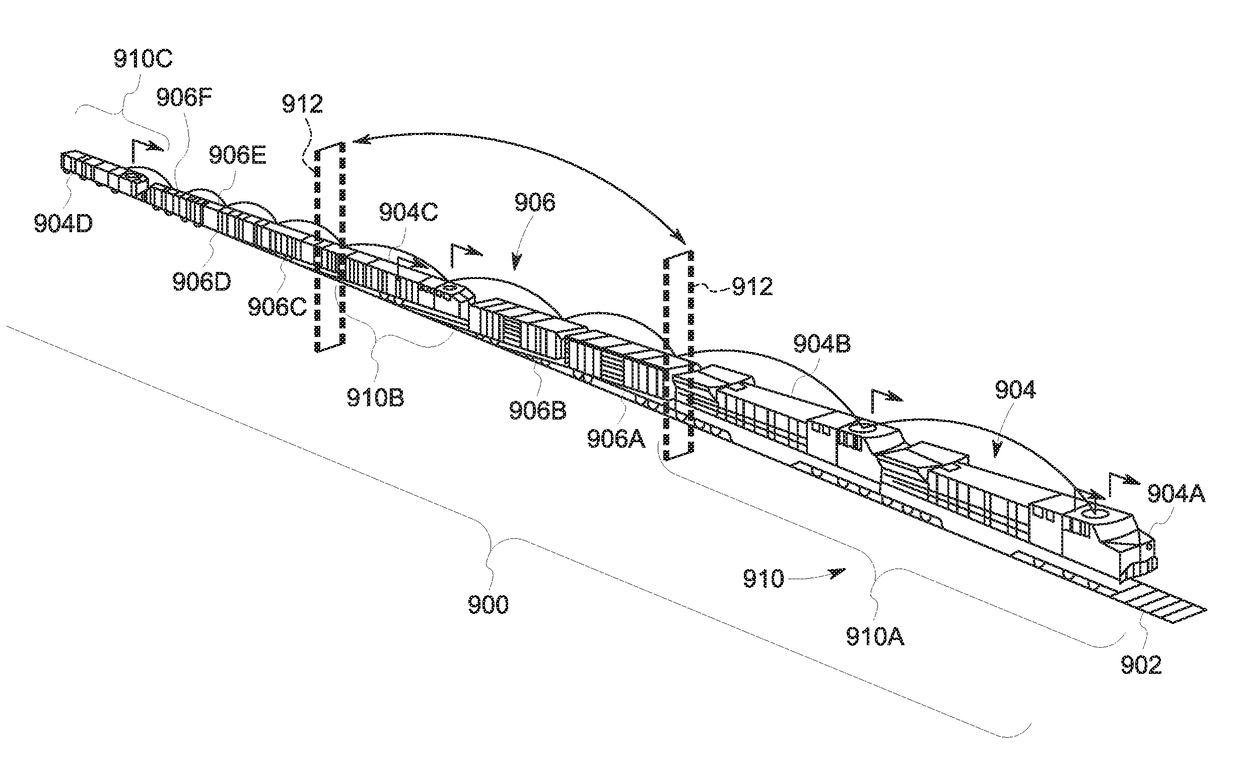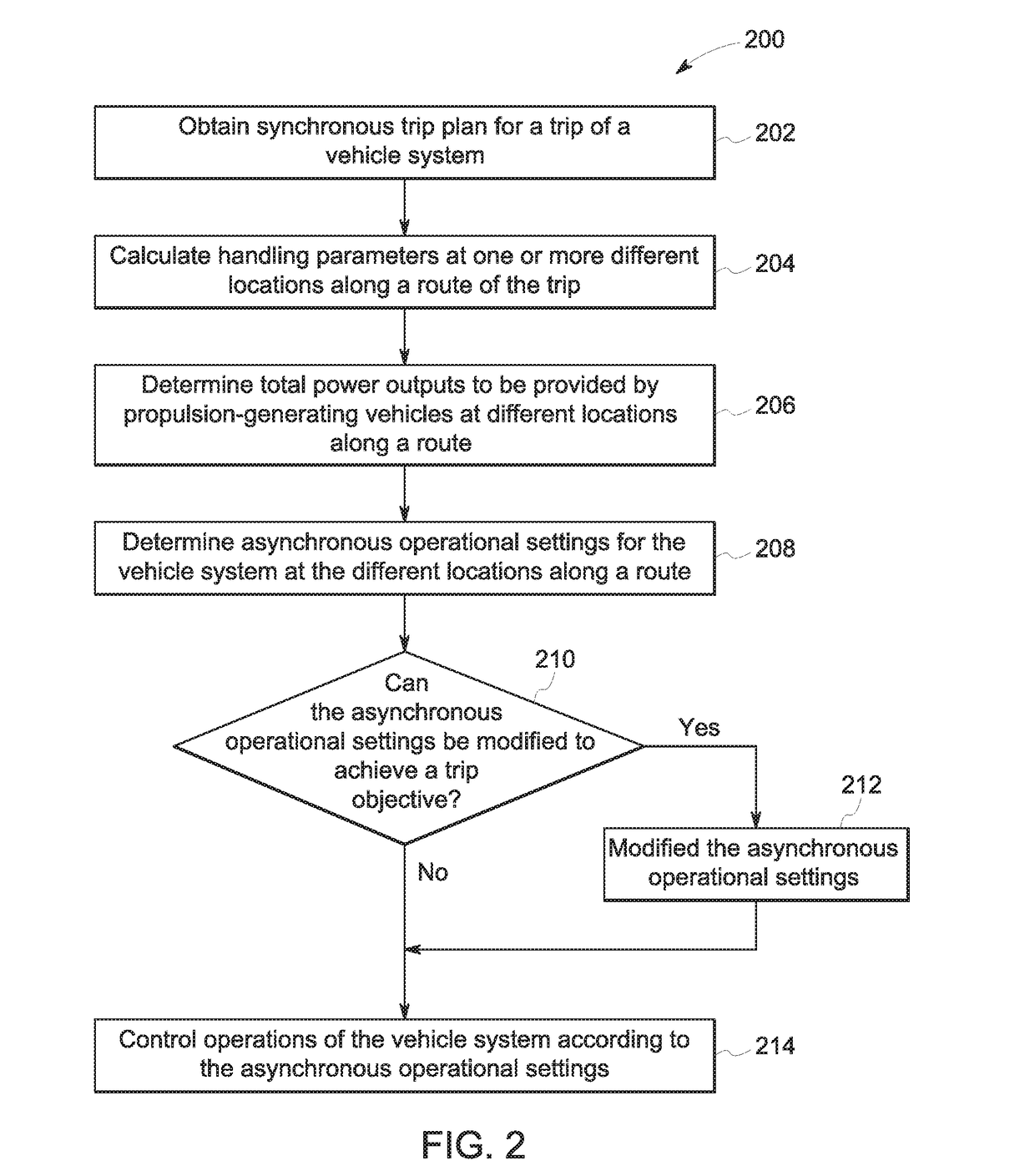Vehicle convoy control system and method
a control system and vehicle technology, applied in the direction of brake systems, locomotives, braking components, etc., can solve the problems of rail cars on the upward slope of the hill to move slower, cars on the downward slope of the hill to move faster, and unsatisfactory forces on the couplers of the rail cars
- Summary
- Abstract
- Description
- Claims
- Application Information
AI Technical Summary
Benefits of technology
Problems solved by technology
Method used
Image
Examples
Embodiment Construction
[0043]FIG. 1 illustrates a schematic diagram of one example of a vehicle system 100 traveling along a route 102. The vehicle system 100 includes several vehicles 104, 106 operably coupled with each other. The vehicles may be mechanically coupled with each other, such as by couplers 108. Alternatively, the vehicles may be coupled with each other without being mechanically coupled with each other. For example, the vehicles may be aerodynamically or fluidly coupled with each other when the vehicles travel sufficiently close to each other that the drag forces imparted on one or more of the vehicles (e.g., from air, wind, water, or the like), is reduced on one or more other vehicles. Marine vessels may be fluidly or aerodynamically coupled when the vessels travel close enough together such that the drag on one or more vessels from the water is reduced relative to the marine vessels traveling farther apart. Automobiles (e.g., trucks) may be fluidly or aerodynamically coupled when the auto...
PUM
 Login to View More
Login to View More Abstract
Description
Claims
Application Information
 Login to View More
Login to View More - R&D
- Intellectual Property
- Life Sciences
- Materials
- Tech Scout
- Unparalleled Data Quality
- Higher Quality Content
- 60% Fewer Hallucinations
Browse by: Latest US Patents, China's latest patents, Technical Efficacy Thesaurus, Application Domain, Technology Topic, Popular Technical Reports.
© 2025 PatSnap. All rights reserved.Legal|Privacy policy|Modern Slavery Act Transparency Statement|Sitemap|About US| Contact US: help@patsnap.com



